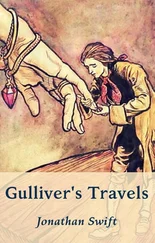Professor Gee and the forensic scientists work, methodically and in accordance with regulated and established procedures, under the watchful eyes of ACC Craig and DCS Oldfield. The participants agree an order in which to proceed, a necessity when some type of examination might secure one form of evidence whilst destroying others.
The first step is an examination of the body’s external surfaces by Detective Chief Inspector Swann, a fingerprint expert, but he finds nothing upon the child and soon leaves, taking with him a set of the child’s own fingerprints for use in comparison against any found in a culprit’s home or car (although Lesley’s prints were never found on any exhibit in the eventual case).
Then the child is undressed, and each item of clothing is handed to Sergeant Godfrey who, assisted by Detective Constable Robert Shore, bags and labels each garment separately. Lesley is wearing precisely the same clothing that she was wearing when she left home.
The forensic scientists are provided with samples of Lesley’s hair, both plucked and cut, and with finger-nail scrapings, and they then leave, to continue their work back on the moors, while they wait to receive all exhibits at the laboratory, where their own tests would be conducted. Samples would be taken from the body by Professor Gee in the course of the post-mortem, for later use by the professor and by the forensic scientists.
Finally Professor Gee is alone with the body. He will carry out his extensive examination whilst ensuring that he makes detailed notes, for in the information which the post-mortem will yield it is hoped to find, not merely the time of Lesley’s death, but also the motive behind her death and the cause and, perhaps, some clue which might assist in the bringing to justice of the person responsible.
The external examination revealed the body of a thin, small, brown-haired girl, some four feet in length and weighing forty pounds. There was slight blood soiling of the skin at the front and back of the trunk and over the face. When this was removed post-mortem staining was found to be faint, pinkish in colour and mainly present at the front of the body, with some areas of pressure pallor in the skin over the knees. Rigor mortis, though confirmed had by this time begun to pass off. The effect of exposure to the elements, visible in the exposed parts of the body, by reason of a dark-grey coloration, particularly to the left hand and the thighs, was also confirmed.
The eyes appeared normal although the pupils were unequal, the right being larger than the left. The absence of petechial haemorrhages 2in the lids or on the eyeballs enabled the professor to exclude strangulation or asphyxiation as the cause of death. The ears and nose were normal, whereas the mouth was slightly soiled by blood with the tip of the tongue protruding between the teeth, and although the teeth themselves showed several caries, none was loose or displaced, indicating that the face had not been subjected to violence.
The chest carried an old, healed, oblique surgical scar on the right side of the chest, some seven inches in length, with a second and similar scar on the left side, both reminders of the surgical treatment for Lesley’s heart complaint.
The external genitalia were normal, with no blood soiling and no evidence of injury. The hymen was intact and the anus normal. The child had not been raped nor subjected to any penetrative sexual attack.
Professor Gee found twelve stab wounds: one to the left front chest, one to the right front of the neck, one to the back of the left ear and nine to the upper part of the chest, at the back, principally on the left-hand side, all within an area measuring six inches by three inches.
As Professor Gee measured the dimensions, the angles, the tracks of entry of each stab wound, was he already constructing a scenario of blows driving the child to the ground, then the killer’s orgy of violence as he stabbed her in the back. He might say it was violent, for several wounds had faint areas of bruising of a half-inch diameter. Were these bruises caused by the impact of the hilt of the knife against the child’s body? It is not a scientific term, but the expression ‘frenzied attack’ hangs unspoken, like an uninvited guest at a wedding.
Her hands were unmarked. There were no defence wounds. 3She had not had time, or had not been able to defend herself. Or she had been attacked from behind.
When the professor examined the child internally, the twelve stab wounds could be traced on their path into the body. Each had penetrated to different depths, and some had caused damage to bones and to internal organs, most notably the heart and lungs.
The hair was cut from Lesley’s head to enable examination of the scalp, but there was no evidence of injury or blood-staining. It was then passed to PS Godfrey, along with a vaginal swab, a mouth swab, a blood sample and the stomach contents (which would show that Lesley had not eaten since leaving her home). The internal organs each yield further samples to be taken for further examination. They are taken to exclude any suggestion of death by natural causes.
From 2.30 p.m. until 6 p.m. Professor Gee went about his work, slowly, cautiously, meticulously and without regard to the silent staring of the police officers – including ACC Craig – who lined the walls of the mortuary, observing proceedings anxiously.
The result of the post-mortem revealed that Lesley had died of bleeding from the twelve stab wounds, the heart, aorta and left lung having been penetrated. The wounds were caused by a knife, with a thin blade no more than half an inch broad and not less than two and a half inches long, with one edge sharp and the other rounded. Bruising adjacent to two of the wounds at the back of the left shoulder suggested that those blows had involved the knife being driven in with substantial force, the hilt or the attacker’s hand having made forceful contact with the body. The wounds to the back of the body had been inflicted as the child lay in the position in which she had been found.
Whilst it was impossible to be certain as to the time of death, Professor Gee was of the opinion that Lesley had been dead more than twenty-four hours before she was found, and that she had possibly died up to three days earlier, namely on Sunday, 5 October 1975. There was a silent hope that his longest estimate was most accurate, so that the child had not had to endure days of captivity (and what else?) before her final, brutal death.
The inquest into the child’s death which opened on 14 October 1975 would disclose only that Lesley had died from multiple stab wounds. There was no need to say more.
Her body has been mutilated, and the post-mortem necessarily adds to that defilement, but Mr Seward again applies his skills, and the body may now be prepared for burial.
But her clothes are neither discarded nor returned to her parents. In murder cases the victim’s silence is compensated for: for her body speaks for her, and her clothes speak for her, and for Lesley Molseed her clothes shout loud.
DS Godfrey amasses his collection from the search team which has, throughout the day, continued to scour the moors and lay-by. He receives twenty-six items, including seven bottles, a Polaroid camera cartridge wrapped in silver foil, part of a plastic bag, a small tablet still in its foil (would that be the killer’s medication?) and four photograph negatives. Had one of these items been discarded by the murderer and, if so, would even one yield up his fingerprint?
A pair of socks, a handkerchief, a packet of cigarettes and a high heel from a lady’s shoe.
And, from the lay-by, a broken knife …
For nearly thirty-six hours PS Godfrey has collected exhibits, numerous and diverse. The collected materials are brought together, and then they are removed from Halifax to the laboratory at Harrogate, where they are handed to Ronald Outteridge, the principal scientific officer in the case and a highly respected member of the Home Office Forensic Science Service.
Читать дальше











